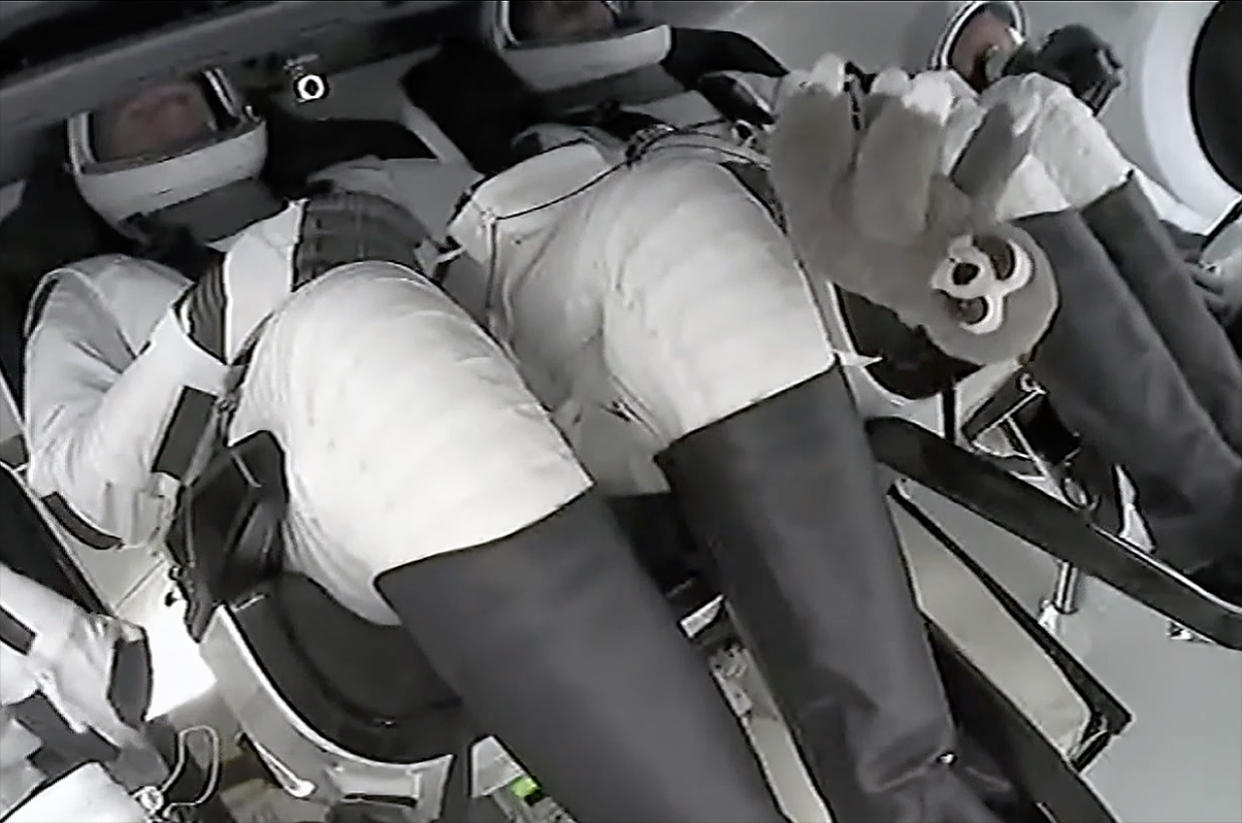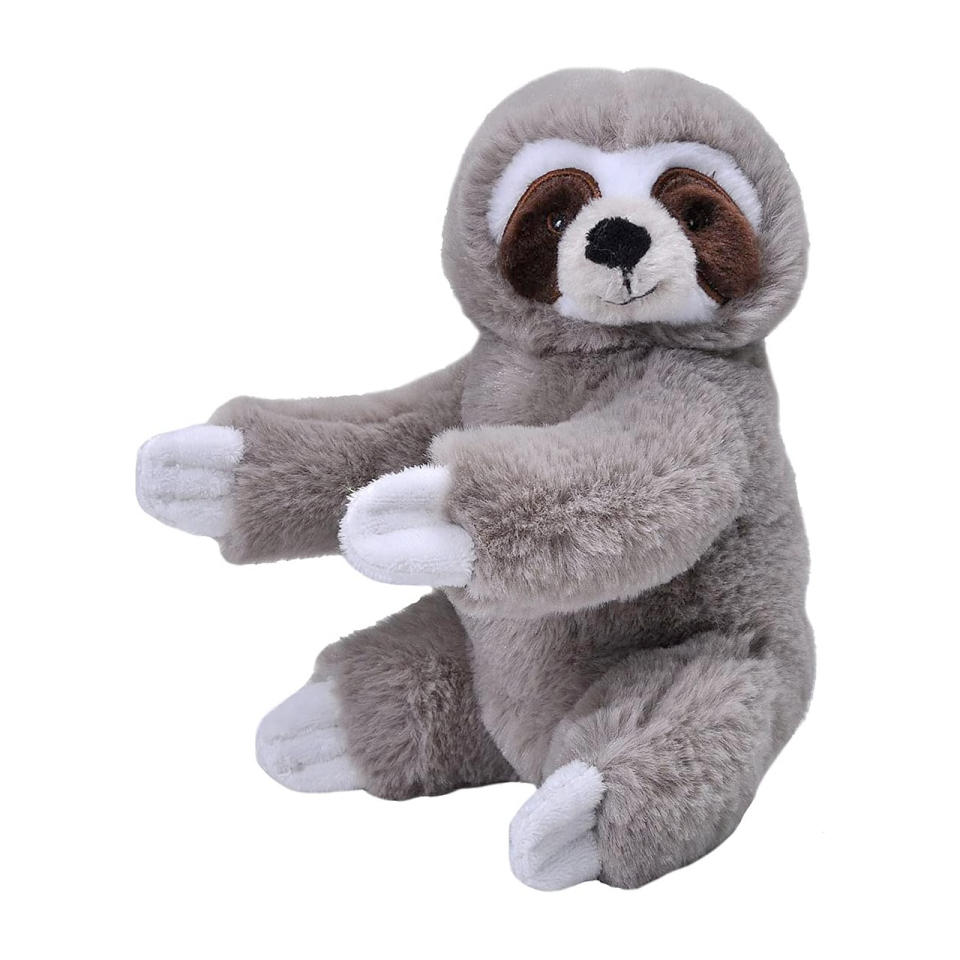'Sasha' the sloth breaks speed records as SpaceX Crew-7 zero-g indicator (photos)

A new record may have just been set for the fastest-moving sloth in the world.
And not just any sloth — a three-toed sloth.
"It is a three-toed sloth, not a two-toed sloth, because apparently that would be too fast for me," said Crew-7 pilot Andreas "Andy" Mogensen, a Danish astronaut with the European Space Agency (ESA), from on board SpaceX's Dragon spacecraft "Endurance," which was launched from Florida early Saturday morning (Aug. 26).
Now on his way to a six-month stay on the International Space Station, Mogensen, together with his three crewmates Jasmin Moghbeli of NASA, Satoshi Furukawa with JAXA (Japan Aerospace Exploration Agency) and Konstantin Borisov of Russia's federal space corporation Roscosmos, are in Earth orbit traveling 17,500 mph (28,200 kph).
As is "Sasha" the sloth.
The average speed of a three-toed sloth (on Earth) is 0.15 miles per hour (0.24 km/h).

Wild Republic EcoKins Mini Sloth: $13.33 at Amazon
You can get a plush sloth just like the Crew-7 astronauts in space on SpaceX's Dragon through Wild Republic's EcoKins Mini Sloth, which is 5% off right now.View Deal
Sasha had a reason to move. As the astronauts' "zero-g indicator," it was the sloth's job to start floating in the cabin when the spacecraft entered orbit, signaling to the crew that they were now in the microgravity environment of space.
"I would like to introduce our zero-g indicator, which was selected by my three children," Mogensen radioed to Earth via SpaceX's mission control in Hawthorne, California. "They chose the sloth because it is one of their favorite animals."

Mogensen recounted that on a trip to Costa Rica, he and his family were able to see sloths "in the wild," particularly on one memorable occasion.
"We were at the beach when a sloth — a very young sloth — appeared in the trees above us and hung out," Mogensen said. "It was a very special moment for us as a family."
Not that his children did not also have a second, less complimentary reason for choosing a sloth.
"Additionally, it is what my children like to call me — with strong encouragement from my wife," Mogensen said. "I'm always the last to leave the house whenever we are going anywhere. Personally, I think it's with good reason, but they say I'm the slowest person alive, which is also why it is a three-toed sloth."
The practice of flying zero-g indicators can be traced back to the very first person to fly into space, Soviet-era cosmonaut Yuri Gagarin, who took a small doll with him on his 1961 mission to watch it float. Since then, other Russian missions have done the same and it became a custom.
When SpaceX began preparing to fly astronauts in 2019, it borrowed the tradition, which has also been adopted by other companies and NASA. Sasha the sloth will meet "Suhail," the symbol of the United Arab Emirates (UAE) astronaut program and Crew-6 zero-g indicator, when Crew-7 reaches the space station on Sunday.
Other dolls recently flown on SpaceX missions include a co-branded Build-A-Bear dressed in an Axiom Space AxEMU spacesuit; a "Little Thinker" Albert Einstein that flew with Crew-5; and a plush modeled after the golden retrievers that serve as assistance dogs at St. Jude Children's Research Hospital.

The Crew-7 zero-g indicator appears to be part of Wild Republic's Ecokins line of "soft and cuddly" plush animals made out of 100 percent recycled water bottles. The 8-inch (20-centimeter) Ecokins Sloth Mini retails for $14.
Whether slow or fast, Sasha the sloth may have one other lesson to teach about life in space.
"We have a saying in space and it's often true: Slow is smooth, smooth is fast," said Jessica Meir, a NASA astronaut who co-hosted the space agency's broadcast of the Crew-7 launch. "When you rush too much, especially in space doing a spacewalk or anything that you're doing, you get in trouble. So slow is smooth and smooth is fast."
Follow collectSPACE.com on Facebook and on Twitter at @collectSPACE. Copyright 2023 collectSPACE.com. All rights reserved.
